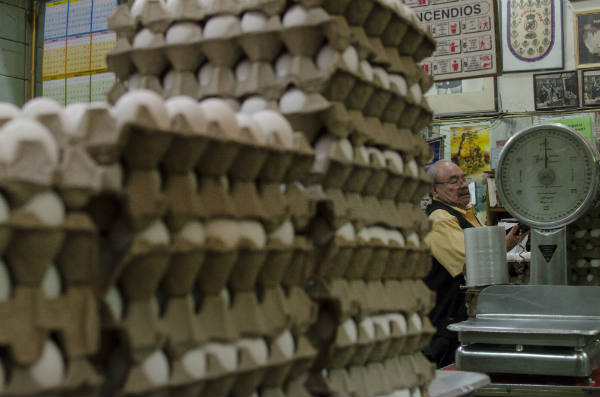[ad_1]
Eggs and tortillas, at 45 and 22 pesos per kilogram.
Mexico – Times Media Mexico. – Morelos, Zacatecas, and CDMX (Mexico City) estates have the highest inflation levels. Andrés Manuel López Obrador’s measures to contain inflation in the country have not had the effect he intended.
A month and a half ago, AMLO signed an agreement with business leaders and food distributors to keep inflation under control. Unfortunately, it did not work out. The National Consumer Price Index reported an annual variation of 7.88 percent in the first two weeks of June this year -the highest figure in 21 years and five months- pressured by increased merchandise, basic foodstuffs, and services.
Two basic foodstuffs: eggs and tortillas, were sold to the public this week at 45 and 22 pesos per kilogram, respectively, while pasteurized milk in cartons was between 25 and 28 pesos per liter.
In recent weeks, different media have reported that the states of Oaxaca, Campeche, Baja California, Chihuahua, Chiapas, Morelos, Zacatecas, and Mexico City are the entities reporting the highest inflation rates, with increases of up to 12 and 14 percent in dairy and meat products. However, the government says the country’s overall inflation is 7.88 percent.

Economists and analysts attest that inflation makes people poorer, with effects manifested in malnutrition, especially among children and youth, at rates ranging from 40 to 55 percent of the general population.
On June 25, 2022, the Bank of Mexico authorized a historic increase in its interest rate, from 7 to 7.75 percent, as part of a desperate measure to curb the inflationary process. Although most countries worldwide suffer from the inflation problem derived from increases in industry and services, governments have taken steps that are accompanied by factors such as the multiplication of jobs and income, efficiency in services, and restrictions in government actions.
AMLO’s government decided to stimulate and increase the production of food and merchandise, which did not have immediate effects. At least not in terms of food production and distribution, since agricultural cycles depend on rain cycles, to which must be added, the country is under a severe and prolonged period of high temperatures and scarce rainfall.
Moreover, the United States had not experienced generalized price increases for forty years. Thus, the effects of this circumstance are reflected in Mexico’s value of growing food imports, such as basic grains like corn, beans, rice, soybeans, and livestock products (beef, pork, poultry, and milk).
The Food and Agriculture Organization of the United Nations (FAO) reported that food prices, such as grains and oilseeds, will continue to increase, mainly corn, wheat, rice, beans, and soybeans, which are highly traded on international markets.
Analysts and U.S. economic officials are expecting possible food price increases to make an effort to contain inflation. However, the President of the FED (Federal Reserve), Jeromy Towell, expressed to U.S. senators that this Central Bank “will continue to raise its interest rate to control inflation,” although he acknowledged that a “recession of the U.S. economy is certainly a possibility.”
In Mexico, the decision to increase interest rates is not simple, so the Central Bank foresees that, if the inflationary process continues, it could apply another increase under similar conditions to the most recent one, under the trend of the U.S. Federal Reserve (Fed).
Banxico’s decisions on this matter also take into account global financial conditions, the environment of uncertainty in the international monetary system, inflationary pressures in several countries derived from the rise in raw materials related to the war between Russia and Ukraine, and the resurgence of Covid-19 cases in Asian countries, especially in China.
The Yucatan Times
Newsroom
Comments
[ad_2]
Source link













